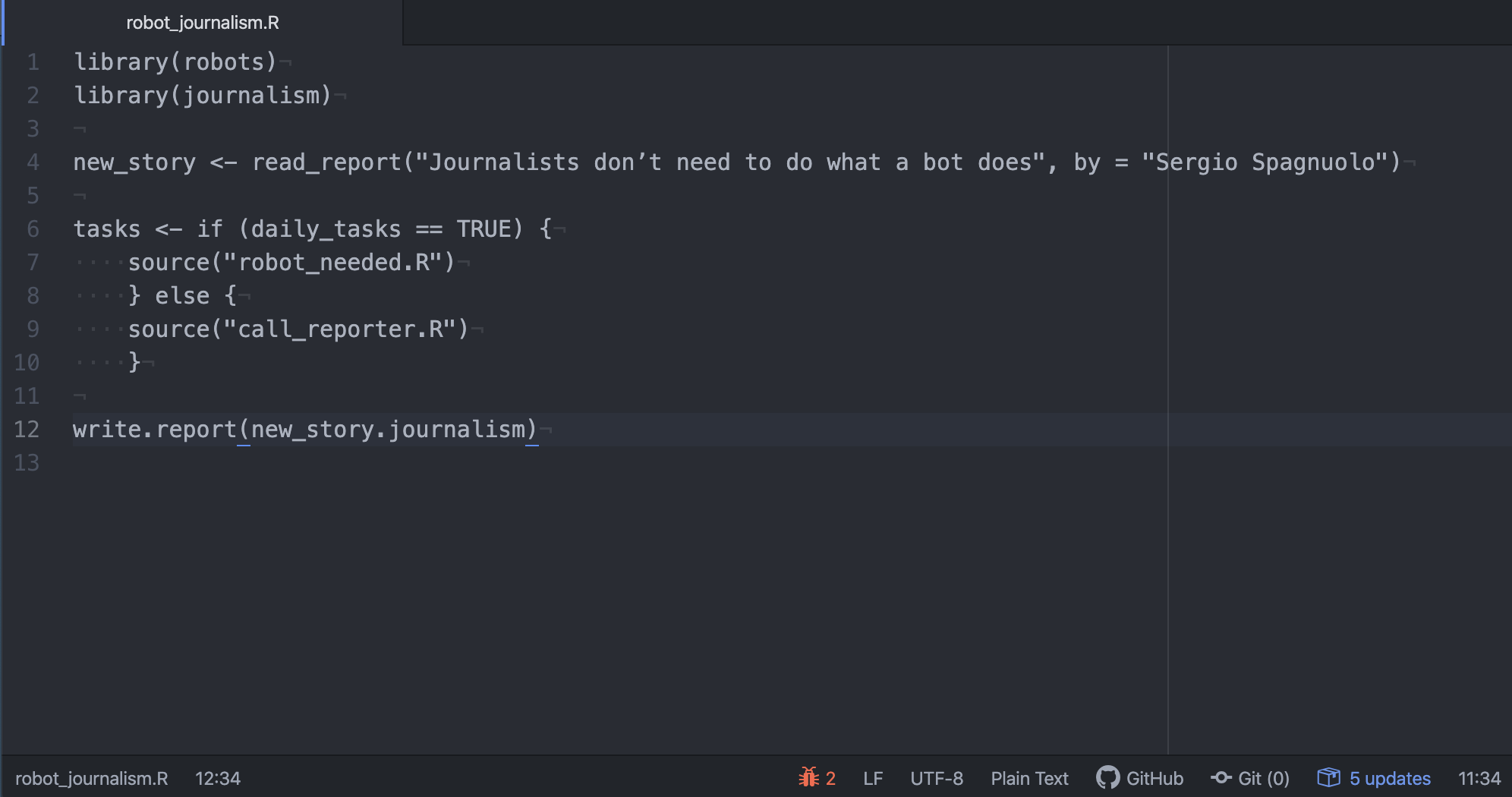Journalists don’t need to do what a bot does
Last August I decided to hire a journalist to produce content for a project. This person would help me with social media posts, newsletters and reports, with the goal of providing other journalists with scientific knowledge coming from social media. After a few weeks, having worked on the budget and the targets I had in mind, I pivoted the whole plan and hired two part-time developers to create a Twitter bot and an automated report delivery system.
In one stroke, I solved two problems: feeding my project’s Twitter timeline and providing newsletter content for the users. After the launch, no human hands needed to touch those two streams of content. It was a classic scenario in which automation literally stole a journalist’s job. After all, why would I need someone producing content that my algorithms already provided me almost free of charge? Also, the initial plan was to hire a journalist for a limited time, while automation will last as long I want it to.
As I dug deeper into the development of these automated products, one question always popped up: we need strategy and thinking, we need… a journalist. What is the point of just putting content out there with no strategy? So on top of that I hired a community manager to man the ship for a while, and we are now better off with both bots and humans.
Automation in journalism is something that continues to raise quite a few eyebrows. Not only for its potential to eliminate tasks that journalists often do, but also because machines are just not the best journalists. Journalists might (and should) be wary of the effects of automating every single aspect of a newsroom — as Microsoft tried to do with MSN — but the key thing I took from that experience is that automation is a great ally, not a standalone solution.
Automating repetitive tasks and simple content creation can have a very useful place within journalism and, arguably, it can lead to better jobs in the industry. Think of an elevator operator; with notable exceptions, we now usually don’t need people pushing elevator buttons for us anymore. This is just a reality.
This brings me back to 2012, when I was working for Reuters in Brazil with the main purpose of reading corporate filings and writing quick, basic headlines based on them. I basically repeated what the fillings said. If a public-traded company announced financial reports, a share buy-back or a new product, I would publish one to four paragraphs and leave it to the beat reporter of that industry to figure out the rest. It was a mechanical, repetitive, boring job. It had importance at the time for the company and for the readers, but the gig had no strategy involved, no actual reporting and decision making. Why would a journalist need to do that? Fair question, with a predictable answer: exceptions apart, mostly bots do that now.
As with any other matter facing the changes that journalism is undergoing right now, there are definitely issues that should be addressed. A March 2019 report from the Institute for Information Law cited “concerns about selective exposure and selective access to information, detrimental effects on the public sphere, ill-designed recommendation algorithms, and concentration of attention on a few platforms to the detriment of a wider, flourishing media market.”
“Undeniably, there is also a risk that AI-driven technologies will be developed to exploit vulnerabilities of users to manipulate, erode privacy, institutionalise intellectual surveillance, and create, intentionally or unintentionally, new digital inequalities,” the report noted.
There is a way of thinking about the place of automation in newsrooms (including smaller ones) that does not clash with journalists losing their jobs. But that does not mean that software should do journalistic work. Not at all. If journalists redirect their resources to the work that matters the most — like actual reporting, investigation, analysis — we can leave the repetitive, boring and petty tasks to the bots. They don’t mind.
Reuters, Bloomberg and most news agencies do this already. Forbes and The Guardian as well. A great story by The New York Times employs exactly that strategy of having automation do the menial things. The Washington Post even won an award for a bot of theirs.
Now that we have more and more powerful tools — like OpenAi’s GPT-3, a promising language model that uses artificial intelligence to generate automated human-like text released in June 2020 — automation sounds even more promising (and maybe also challenging) than ever for journalism. We should study it and put it to our advantage.
There is a back-and-forth discussion among those who see automation as a foe, predicting chaos and mass unemployment, and those who see it differently. But there’s one thing everyone is on the same page about: it’s happening one way or another, in a lot of different industries at once, journalism included, and it is up to us to make an ally out of it, preserving journalism jobs the best we can and increasing productivity in our newsrooms. We just need proper (human) strategy.
- Journalists don’t need to do what a bot does - October 26, 2020





